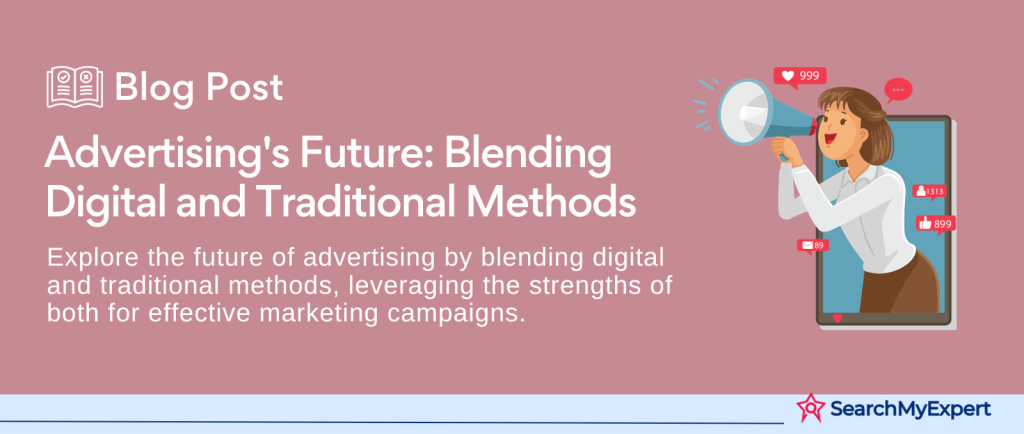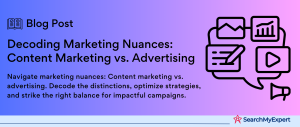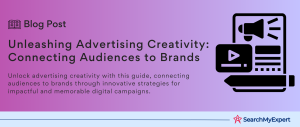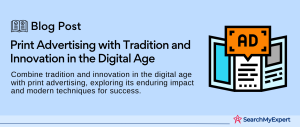Digital vs. Traditional Advertising
Advertising and its Evolution
Advertising is a pivotal aspect of marketing, a tool used by businesses and organizations to communicate with potential customers about their products, services, or ideas. Historically, advertising has played a crucial role in shaping consumer behavior and brand perception. It functions as a means to inform, persuade, and remind consumers about the choices available to them. The primary aim of advertising is to influence purchasing decisions and to establish a connection between the brand and the consumer.
With the advent of the digital era, advertising has undergone a significant transformation. Digital advertising has emerged as a powerful force, redefining the landscape of how businesses communicate with their audiences. This shift has been driven by the rapid growth of the internet and technological advancements, leading to a change in consumer behavior and expectations. Digital advertising stands out for its ability to leverage the internet and digital platforms to deliver promotional messages and measure their impact with unprecedented precision and personalization.
The key differences between digital and traditional advertising
The key differences between digital and traditional advertising lie in their reach, targeting capabilities, measurability, speed, and cost-effectiveness. Digital advertising offers targeted approaches based on user behavior, preferences, and demographics, making it a highly efficient and interactive medium. In contrast, traditional advertising often takes a broader approach, focusing on mass outreach rather than personalized messaging.
Defining Traditional Advertising
Traditional advertising refers to the various forms of advertising that have been used historically, before the rise of the internet. This includes channels like print (newspapers, magazines), broadcast (television, radio), and outdoor (billboards, transit ads) advertising.
Characteristics and Channels of Traditional Advertising
- Print Advertising:
This involves placing ads in newspapers and magazines. Print ads are known for their visual appeal and longevity, as they can be referred back to multiple times. - Broadcast Advertising:
This includes television and radio ads. TV advertising combines audio and visual elements to create a powerful impact, while radio ads rely on sound and storytelling. - Outdoor Advertising: This encompasses billboards, banners, and transit advertisements. It is visible to a large number of people, especially in high-traffic areas.
Advantages of Traditional Advertising
- Broad Reach: Traditional advertising channels like TV and newspapers reach a vast audience, making them ideal for building brand awareness on a large scale.
- High Impact:
Television advertising, in particular, can produce a significant impact due to its combination of audio and visual elements. - Brand Credibility:
Being featured in established media like newspapers or TV can enhance a brand’s credibility and prestige. - Tangible Elements: Print advertising provides a tangible element that consumers can touch and feel, which can aid in brand recall.
Limitations of Traditional Advertising
- High Cost: Traditional advertising channels, especially TV and print, can be expensive in terms of production and placement costs.
- Lack of Measurability: Measuring the direct impact of traditional advertising campaigns on sales or consumer behavior is challenging compared to digital metrics.
- Limited Customization: Traditional advertising is often one-size-fits-all, making it difficult to tailor messages for specific segments of the audience.
- Changing Consumer Habits: With the increasing shift towards digital media, the effectiveness of traditional advertising channels is being questioned as fewer people engage with these traditional mediums.
While traditional advertising has played a foundational role in the history of marketing, its limitations in the face of evolving digital technologies and changing consumer habits are becoming increasingly apparent. The transition to digital advertising reflects a broader shift in the marketing world, one that prioritizes precision, personalization, and measurable impact.
Unveiling Digital Advertising
Definition and Forms
Digital advertising refers to the practice of delivering promotional content to users through various digital channels. It is a broad term that encompasses multiple strategies and platforms. The key forms of digital advertising include:
- Search Engine Marketing (SEM): This involves promoting a website by increasing its visibility in search engine results pages primarily through paid advertising. SEM leverages the power of search engines like Google and Bing.
- Social Media Marketing:
This strategy uses social media platforms like Facebook, Instagram, and Twitter to reach a target audience. It can include both organic posts and paid advertisements. - Content Marketing: This approach focuses on creating and distributing valuable, relevant, and consistent content to attract and engage a clearly defined audience. It aims to stimulate interest in products or services rather than directly promote a brand.
- Email Marketing:
Sending direct promotional emails to acquire new customers or nurture existing relationships. - Display Advertising:
This includes banner ads, video ads, and interactive ads on websites and apps. - Mobile Advertising:
Tailored advertising for mobile devices, often leveraging location-based services.
Benefits of Digital Advertising
- Targeted Reach: Digital advertising allows for precise targeting based on demographics, interests, behavior, and location.
- Cost-Effectiveness: Compared to traditional advertising, digital advertising often offers lower costs and higher flexibility in terms of budget allocation.
- Measurable Results:
Digital platforms provide detailed analytics, making it easier to measure the effectiveness of campaigns in real-time. - Interactivity and Engagement:
Digital ads can be interactive, encouraging direct engagement from the audience. - Wide Range: Digital platforms offer a global reach, allowing brands to communicate with audiences across the world.
Challenges
- Constantly Evolving Landscape:
The digital world is always changing, requiring advertisers to continuously adapt strategies. - Ad Fatigue and Blindness:
Overexposure to digital ads can lead to consumers ignoring them. - Privacy Concerns: Growing concerns about data privacy and regulations like GDPR impact how digital ads are targeted and measured.
Comparative Analysis: Digital vs. Traditional Advertising
Reach
- Digital: Offers global reach and precise targeting.
- Traditional: Broad reach, but less targeted.
Targeting
- Digital: Highly specific targeting based on user data.
- Traditional: General targeting based on demographics.
Cost
- Digital:
More cost-effective with varied budget options. - Traditional: Generally more expensive, especially for TV and print.
Measurability
- Digital: High measurability with real-time analytics.
- Traditional: Limited measurability, often based on estimated viewership.
Engagement
- Digital:
Interactive and capable of two-way communication. - Traditional:
Mostly one-way communication with limited interaction.
Suitability for Business Goals and Audiences
- Digital: Ideal for niche markets and specific target audiences. Suitable for businesses aiming for direct interaction and engagement.
- Traditional:
Better for broad brand awareness campaigns. Suitable for products and services with a wide appeal.
Understanding Strengths and Weaknesses
For an effective advertising strategy, businesses must understand both the strengths and weaknesses of digital and traditional advertising. The choice depends on the business goals, target audience, budget, and the desired level of engagement and interaction. While digital advertising offers precision and measurability, traditional advertising still holds value in building brand credibility and reaching a broader audience. A balanced approach, or an omnichannel strategy, often yields the best results, leveraging the advantages of both digital and traditional methods.
The Convergence of Digital and Traditional Advertising
The advertising landscape has witnessed a significant shift towards the integration of digital and traditional advertising strategies. This convergence is a response to the evolving media consumption habits of audiences, who increasingly navigate between online and offline channels.
Integration of Strategies
The fusion of digital and traditional advertising involves leveraging the strengths of both to create a more impactful and cohesive marketing approach. For example, a TV ad might include a hashtag to encourage online discussion, or a print ad might direct readers to a website. This integrated approach ensures that brands maintain a consistent presence across various platforms, maximizing their reach and engagement with diverse audience segments.
Cross-Media Marketing
Cross-media marketing is a strategic approach that combines different media types, both traditional and digital, in a single campaign. This method capitalizes on the unique benefits of each medium. For instance, traditional media, like television and print, offer broad reach and high-impact visibility, while digital media, including social media and email, provide targeted, interactive opportunities for engagement. The effectiveness of cross-media marketing lies in its ability to create a more dynamic and multi-dimensional campaign that resonates with audiences across different touchpoints.
Examples of Successful Multi-Channel Campaigns
- Coca-Cola’s ‘Share a Coke’ Campaign:
Initially launched with names on bottles and cans, it expanded into digital realms with personalized virtual bottles and social media engagement. - Nike’s Multi-Platform Campaigns:
Often combines high-profile television ads with interactive digital campaigns involving social media challenges and personalized online content. - Dove’s Real Beauty Campaign:
Spanned across TV commercials, print ads, and digital platforms, including YouTube and social media, to promote its message and encourage user participation.
Choosing the Right Advertising Mix
Selecting the most effective advertising mix is crucial for businesses aiming to maximize their campaign’s impact. The choice should be based on a deep understanding of their specific needs, target audience, and budget constraints.
Factors to Consider
- Target Audience:
Understanding the media consumption habits of the target audience is key. For younger demographics, digital platforms might be more effective, whereas traditional media might be better for older audiences. - Campaign Objectives: Brand awareness campaigns might benefit more from the broad reach of traditional media, while digital advertising is more suited for targeted, action-driven campaigns.
- Budget Constraints: Digital advertising can be more cost-effective and flexible for smaller budgets, while traditional advertising may require a larger investment.
Maximizing Campaign Effectiveness
Incorporating both digital and traditional elements can create a more comprehensive and effective campaign. For instance, a brand might use television ads to build awareness and complement this with digital ads for retargeting and engagement.
Evaluating Success Across Channels
To evaluate the success of advertising campaigns, it’s essential to establish clear metrics and KPIs (Key Performance Indicators) for each channel. For digital campaigns, metrics might include website traffic, click-through rates, and conversion rates. For traditional campaigns, measures might be audience reach, brand recall, and an increase in sales during the campaign period.
Businesses should also consider employing tools and analytics to track cross-media engagement and the overall impact of the campaign. Regular analysis and adjustments based on these insights are essential for optimizing the advertising mix over time.
Conclusion
The convergence of digital and traditional advertising represents a strategic response to the changing media landscape. By combining the broad reach and credibility of traditional media with the targeted, interactive capabilities of digital platforms, businesses can create more dynamic and effective campaigns. The key is to understand the unique advantages of each medium and to choose a mix that aligns with the business’s goals, audience preferences, and budget. Regular evaluation and adaptation of strategies are crucial in the ever-evolving advertising world.
Shape the future of your brand with the creativity of our Advertising Agencies.
Table of Contents
Toggle






